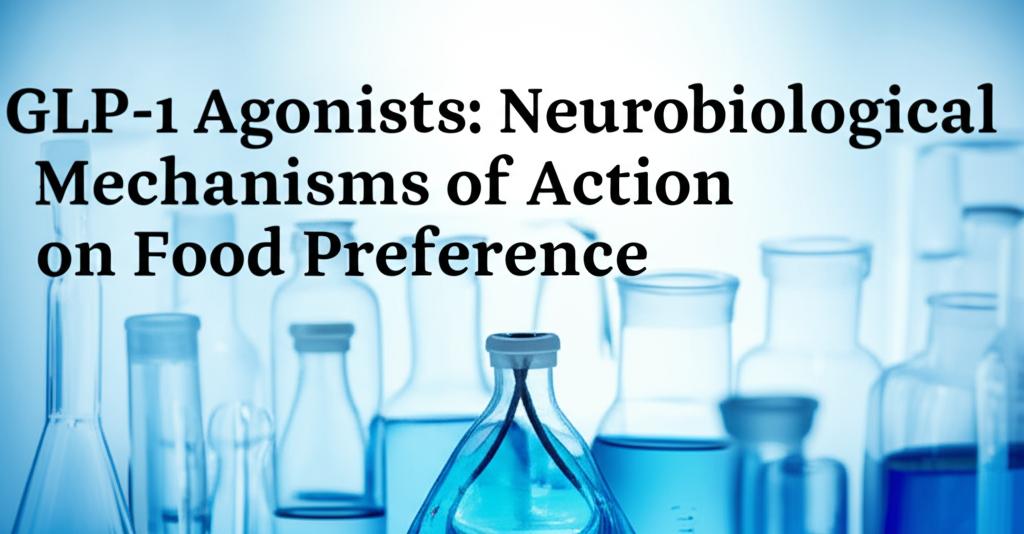GLP-1 agonists, initially developed for type 2 diabetes, have shown significant effects on weight loss, partly by influencing food preferences. Their action involves complex neurobiological mechanisms that go beyond simple appetite suppression.
1. Central Nervous System Action:- Hypothalamus and Hindbrain: GLP-1 receptors (GLP-1R) are found in key brain areas controlling appetite and satiety, such as the arcuate nucleus (ARC) and other hypothalamic nuclei, as well as the nucleus tractus solitarius (NTS) in the hindbrain. GLP-1 agonists activate these receptors, leading to increased feelings of fullness and reduced food intake. Specifically, they stimulate pro-opiomelanocortin (POMC) and cocaine- and amphetamine-regulated transcript (CART) neurons, which promote satiety, and inhibit Neuropeptide Y (NPY) and Agouti-related peptide (AgRP) neurons, which drive hunger.
- Mesolimbic Reward System: GLP-1Rs are also present in brain regions associated with reward and motivation, including the ventral tegmental area (VTA) and the nucleus accumbens (NAc). By acting on these areas, GLP-1 agonists can reduce the rewarding value of highly palatable foods, particularly those high in fat and sugar. This can lead to a shift in food preference away from these energy-dense options. Animal studies show that GLP-1R activation in these regions can decrease hunger-driven feeding, the hedonic (pleasure-seeking) value of food, and food motivation. Some GLP-1 agonists, like liraglutide and semaglutide, can cross the blood-brain barrier and directly activate these receptors.
- Amygdala: The amygdala, involved in emotional and motivational aspects of feeding, also expresses GLP-1 receptors. GLP-1 signaling in the amygdala may contribute to the anorexigenic (appetite-reducing) effects of these drugs and influence emotional eating patterns. Dopamine signaling in the amygdala, which increases during food ingestion, is modulated by GLP-1.
- Vagus Nerve: GLP-1 secreted from the gut can also signal the brain via the vagus nerve, which projects to the NTS. This pathway plays a role in satiety and can influence food choices.
- Reduced Craving for High-Energy Foods: GLP-1 agonists have been shown to decrease cravings for and the preference for energy-dense foods. This effect is likely mediated by their action on the mesolimbic reward pathways, diminishing the pleasurable response to such foods.
- Altered Taste Perception: Emerging research suggests that GLP-1 signaling can directly affect taste perception. GLP-1 receptors are found on taste bud cells. Animal studies indicate that GLP-1 can modulate responses to sweet and umami tastes. For instance, GLP-1 receptor knockout mice showed reduced nerve responses to sweet stimuli but increased sensitivity to umami. This suggests a complex role of GLP-1 in gustatory coding, potentially influencing food choices at a sensory level.
- Conditioned Taste Aversion: Central administration of GLP-1 in animal models has been shown to elicit conditioned taste aversion, particularly to sweet nutrients. This implies that centrally produced GLP-1 might directly impact how the brain processes and learns about tastes.
- Impact on Satiety Signals: GLP-1 agonists delay gastric emptying, which means food stays in the stomach longer. This contributes to a prolonged feeling of fullness and can reduce overall food intake, indirectly influencing preferences by making individuals less likely to seek out additional food, especially highly palatable snacks.
- Beyond Food Reward: The influence of GLP-1 on reward pathways extends beyond food. Preclinical studies suggest that GLP-1 receptor agonists may also reduce the rewarding effects of substances like alcohol, cocaine, amphetamines, and nicotine, indicating a broader role in modulating reward-related behaviors.
- Interaction with other Hormones: The effects of GLP-1 are often intertwined with other hormones. For example, glucose-dependent insulinotropic polypeptide (GIP), another incretin hormone, can work synergistically with GLP-1. Dual GIP/GLP-1 receptor agonists like tirzepatide have shown even greater efficacy in weight loss and glycemic control, potentially through enhanced activation of satiety pathways in the brain.

